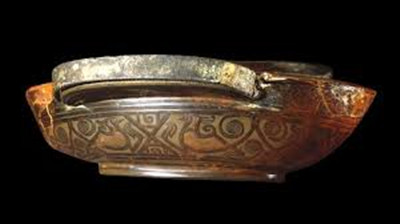High-quality lacquer was brilliantly smooth and virtually indestructible. Fine pieces like our cup required up to 30 or more separate coats, with long drying and hardening times between each, and so it could have taken up to about a month to make. Hardly surprising, then, that they were inordinately expensive-you could buy more than ten bronze cups for the price of one in lacquer-so lacquer cups were strictly reserved for top management, the Imperial governors controlling the frontiers of the Empire. Although the Han Chinese and the Roman empires covered roughly the same land area, a census conducted in China, only two years before our cup was made, came up with the wonderfully precise figure of a population of 57,671,400 individuals. Here's Roel Sterckx again:












